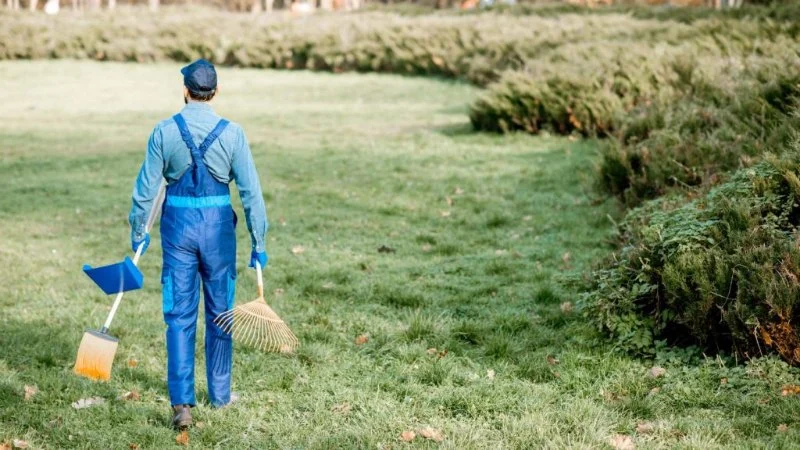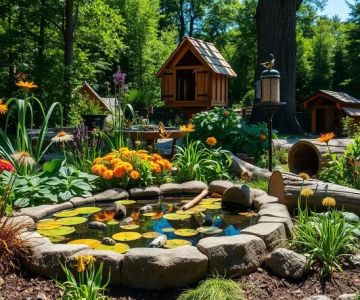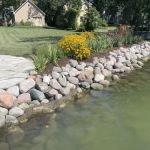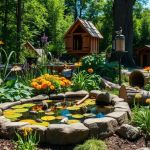
- 1. Assess Your Lawn Condition
- 2. Remove Debris and Thatch
- 3. Seed and Fertilize the Lawn
- 4. Water and Maintain Your Lawn
1. Assess Your Lawn Condition
Before you can start the process of reviving your neglected lawn, it's important to assess its current condition. This will help you understand the extent of the damage and determine the steps you need to take. Take a walk around your lawn and evaluate the following:
- Patchy areas: Look for areas with thinning or missing grass.
- Weeds: Identify any weeds that have taken over the lawn.
- Soil compaction: Test the soil to see if it is compacted or hard, as this can prevent proper grass growth.
- Grass color: Notice if the grass is yellowing or turning brown, which indicates poor health.
By identifying the specific issues, you’ll be able to tailor your approach for restoring your lawn’s health. Remember that the goal is to bring your lawn back to life while minimizing the use of chemicals and harmful practices.
2. Remove Debris and Thatch
The next step in reviving a neglected lawn is to remove any debris and thatch. Over time, grass clippings, fallen leaves, and other organic matter can accumulate and form a thick layer of thatch on the soil surface. Thatch can prevent water, air, and nutrients from reaching the grass roots, leading to poor lawn health.
To remove the debris, follow these steps:
- Rake the lawn: Use a rake to remove leaves, sticks, and other debris that may have accumulated on the lawn.
- Remove thatch: Use a dethatching rake or a power dethatcher to remove the thatch layer. This process will help break up compacted soil and promote healthy grass growth.
Once you've removed the debris and thatch, your lawn will be better prepared to absorb water and nutrients, setting the stage for a healthy revival.
3. Seed and Fertilize the Lawn
Once the lawn is clear of debris and thatch, it's time to seed and fertilize. Planting new grass seed will fill in bare spots and help establish a lush, green lawn. Fertilization provides essential nutrients that encourage grass growth and improve overall lawn health.
Follow these steps for seeding and fertilizing your lawn:
- Choose the right grass seed: Select a grass type that is suited to your climate and lawn conditions. For cool-season grasses, such as fescue or bluegrass, plant in early fall or spring. For warm-season grasses, such as Bermuda or zoysia, plant in late spring or summer.
- Spread the seed: Use a broadcast spreader to evenly distribute the seed across your lawn. Be sure to follow the recommended seeding rate on the seed packaging.
- Fertilize the lawn: Apply a balanced fertilizer that is appropriate for your lawn's needs. Look for fertilizers with a mix of nitrogen, phosphorus, and potassium (N-P-K) to support healthy growth.
After seeding and fertilizing, lightly rake the soil to ensure good seed-to-soil contact and help protect the seed. This will give the grass the best chance to establish itself.
4. Water and Maintain Your Lawn
Proper watering is crucial to the success of your lawn revival. New seeds need consistent moisture to germinate and establish roots. Follow these watering tips to ensure your lawn thrives:
- Water consistently: Water your lawn deeply and consistently to keep the soil moist, but avoid over-watering, which can lead to runoff and disease. Water in the early morning or late afternoon to prevent water evaporation.
- Avoid shallow watering: Shallow watering encourages shallow root growth. Instead, water deeply to encourage strong, deep roots.
- Monitor lawn growth: After a few weeks, monitor the growth of the grass and adjust watering as necessary. As the grass matures, reduce the frequency of watering to prevent over-saturation.
Additionally, be sure to mow your lawn regularly once the grass reaches a suitable height. Keep your mower blades sharp to avoid damaging the grass, and never cut more than one-third of the grass blade at a time.
By following these steps, you can revive your neglected lawn and transform it into a healthy, lush green space. For more tips on lawn care and landscaping, visit Beautiful Landscapes for the best lawn products and expert advice.









 Infinity Lawn & Landscaping4.0 (52 reviews)
Infinity Lawn & Landscaping4.0 (52 reviews) QualityWorks Trademark LLC4.0 (30 reviews)
QualityWorks Trademark LLC4.0 (30 reviews) Eubanks Environmental5.0 (10 reviews)
Eubanks Environmental5.0 (10 reviews) BrightView Landscape3.0 (16 reviews)
BrightView Landscape3.0 (16 reviews) Statements In Stone Pool and Patio4.0 (47 reviews)
Statements In Stone Pool and Patio4.0 (47 reviews) Schmitt's Landscape Tree service North Aurora4.0 (4 reviews)
Schmitt's Landscape Tree service North Aurora4.0 (4 reviews) How to Landscape for Seasonal Wildlife Attraction in Your Garden
How to Landscape for Seasonal Wildlife Attraction in Your Garden How to Build a Wildlife Habitat Garden That Supports Biodiversity
How to Build a Wildlife Habitat Garden That Supports Biodiversity How to Use Garden Art to Add Personality to Your Outdoor Space
How to Use Garden Art to Add Personality to Your Outdoor Space How to Plan Outdoor Fire & Water Features Harmoniously for Your Garden
How to Plan Outdoor Fire & Water Features Harmoniously for Your Garden How to Revive a Neglected Lawn Step by Step
How to Revive a Neglected Lawn Step by Step How to Choose Native Shrubs That Thrive Without Fertilizer
How to Choose Native Shrubs That Thrive Without Fertilizer